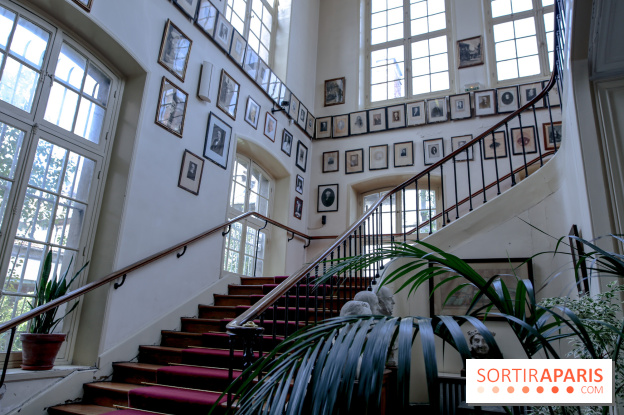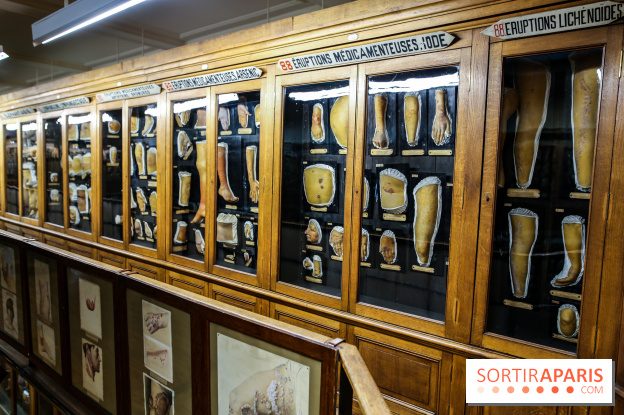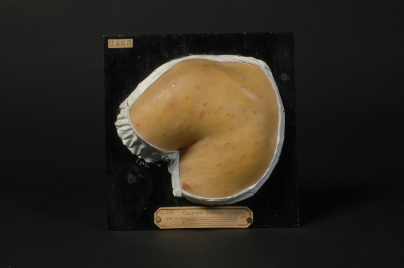Paris may be considered one of the world's most beautiful cities, but it's also full of mysterious places. If you're a medical enthusiast, or one of those who regret the closure of the Musée Dupuytren, which showcased impressive anatomical pathologies, there's still another fascinating place dedicated to thehistory of medicine. It's the Musée des Moulages de l'Hôpital Saint-Louis, Assistance Publique - Hôpitaux de Paris (AP-HP).
This unusual, secret museum in Paris boasts a gargantuan collection of over 4,900 medical wax casts of dermatological diseases dating from the late 19th and early 20th centuries. The collection is so exceptional that it has been listed as a Monument Historique since 1992. The impressive number of casts also makes the museum unique in the world. This museum-library inevitably attracts many medical professionals, as well as the curious and the curious at heart. Sensitive souls please!
But before we introduce you to this incredible molding room, restored in 2016, we begin our visit on the first floor, where you can admire a sculpture of Saint-Louis, who gave his name to this AP-HP hospital, dedicated to the treatment of diseases in 1801, and whose first dermatologist, Jean Louis Alibert, contributed greatly to the reputation of the place.
As you climb the stairs, you'll discover some 50 portraits of the great names in French dermatology, as well as those of the hospital's retired department heads, including Martine Bagot, the first woman to join this impressive collection in September 2022.




We then enter the famous, sumptuous hall - laid out like a natural history museum - where thousands of strikingly realistic casts await us. Here, all dermatological diseases are represented, starting with syphilis (around 1,200 casts have been made of this pathology), but also lupus, leprosy, scleroderma, herpes, stretch marks, acne, warts, urticaria, shingles and lymphatic filariasis, commonly known as elephantiasis. All these dermatological diseases are listed in alphabetical order.
The first thing that strikes us is the realism of these casts, which, it should be remembered, are representations of patients formerly hospitalized at Hôpital Saint-Louis. Most of these casts were made by one man: Monsieur Jules Baretta. Spotted by Dr. Lailler in his store when he was making fruit out of cardboard pasta, artisan Jules Baretta readily agreed to change his career path, specializing in casts of body parts affected by dermatological lesions. After two years' training studying the various pathologies, he made his first wax cast in 1865.
In all, Jules Baretta made over 3,000 casts between 1865 and 1913. He was succeeded by two other men: Louis Niclet from 1914 to 1924 and Stephan Littre from 1928 to 1958; the very last cast in this general collection was made at that time.
As the number of casts made by Jules Baretta grew, they had the idea of creating this museum, the only one of its kind in the world. It was inaugurated in August 1889, on the opening day of the first international dermatology congress, held at the Musée des Moulages as part of the Universal Exhibition. While the facility was used by doctors for training, it was also used for preventive purposes.




In recognition of its importance, three other collections have joined the Musée des Moulages and the general collection: the Péan collection (615 casts), the Parrot collection (88 casts) and the Fournier collection (442 casts).
A closer look reveals that all these casts, displayed behind glass, are accompanied by a label, revealing a number, corresponding to entry into the collection, as well as the patient's diagnosis, age and occupation. All parts of the body were affected by these dermatological diseases: the face, of course, but also the tongue, back, hands, feet, scalp, genitals... And some of the casts, such as the syphilitic babies in the Péan collection, or the faces of women, can almost make you feel their suffering.
Known to many dermatologists, the Musée des Moulages is "a true testimony to an era and to the history of medicine ", explains Sylvie Dorison, in charge of the museum-library at Hôpital Saint-Louis AP-HP, who points out that the production of these casts remains a secret to this day. Each artisan molder had his own technique. But " the wound was certainly protected with animal intestine skin ", explains Sylvie Dorison. Next, liquid plaster had to be added, followed by hot wax. Once the materials had been separated, the molder added pigments to the surface, " a bit like tattoos ", adds the person in charge of the museum-library at Hôpital Saint-Louis AP-HP.
If you're interested in experiencing and discovering this unique and unusual museum in Paris, please note that it's open Monday to Friday, 9am to 4.30pm. Please note, however, that visits to the Musée des Moulages are by appointment only (by e-mail or telephone). Due to the sensitive nature of some of the castings, visitors under 12 years of age are not permitted. While access is free for AP-HP staff, other visitors must pay €7 full price (€4 for students).
Please note that it's been over 4 years since our last visit, so the place and experience may have changed.
Location
Musée des Moulages
1 Avenue Claude Vellefaux
75010 Paris 10
Access
Metro: Goncourt (line 11), République (lines 3, 5, 8, 9 and 11), Jacques Bonsergent (line 5), Colonel Fabien (line 2)
Prices
étudiants: €4
Plein Tarif: €7
Official website
hopital-saintlouis.aphp.fr
Booking
musee.moulages.sls@aphp.fr
0142494986























